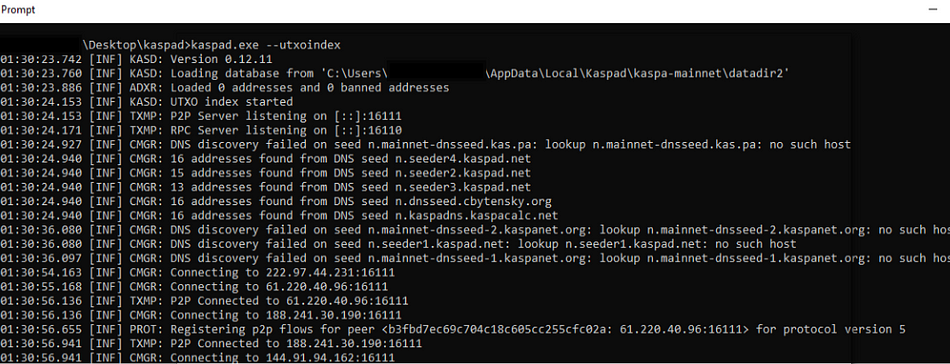Blockchain technology has revolutionized the way we view digital transactions and data security. At the heart of this technology lie the unsung heroes, the Crypto Nodes. This article will delve into the intricate world of Crypto Nodes, their role in the blockchain ecosystem, and why they are so crucial to the success of blockchain technology.
Table of Contents
Blockchain Basics
Understanding Blockchain Technology
Blockchain technology is a type of distributed ledger technology that stores data across multiple systems in a network, ensuring transparency and security. This technology is the foundation of cryptocurrencies like Bitcoin and Ethereum.
The Importance of Decentralization in Blockchain
Decentralization is a key feature of blockchain technology. It means that no single entity has control over the entire network. Instead, control is distributed among all participants, or nodes, in the network.
Recording Transactions on a Blockchain
Transactions on a blockchain are recorded in blocks, which are linked together in a chain. Each block contains a list of transactions, and once a block is added to the chain, the information it contains is considered immutable.
What are Crypto Nodes?
Defining Crypto Nodes
Crypto Nodes are computers that maintain a copy of the blockchain and uphold the rules of the network. They are an essential part of the blockchain network as they process transactions and ensure the security and integrity of the network.
The Role of Nodes in a Blockchain Network
Nodes validate and relay transactions, ensuring that all actions on the network follow the established protocol. They also prevent double-spending, a common problem in digital currencies.
Different Types of Nodes
| Node Type | Description | Role | Requirements |
|---|---|---|---|
| Full Nodes | Maintain a complete copy of the blockchain and validate all transactions and blocks. | Enforce all the rules of the network, validate and relay transactions and blocks. | Significant storage space, stable internet connection, and time to sync the blockchain. |
| Light Nodes | Only download a fraction of the blockchain, relying on full nodes for transaction validation. | Allow users with limited resources to participate in the network. | Less storage space, stable internet connection. |
| Mining Nodes | Add new blocks to the blockchain by solving complex mathematical problems. | Secure the network, validate transactions, and add new blocks to the blockchain. | Powerful computer hardware, significant electricity, and mining software. |
| Masternodes | Perform special functions like increasing transaction privacy, participating in governance and voting, and enabling budgeting and treasury systems. | Enhance network functionality, participate in decision-making processes. | Significant amount of cryptocurrency as collateral, stable internet connection, dedicated IP address. |
In a blockchain network, nodes are the individual parts of the larger data structure that make up the blockchain. There are several types of nodes, each with a unique role in maintaining the network. Here are the most common types:
Full Nodes
Full Nodes are the most important nodes in a blockchain network. They download the entire blockchain and fully enforce all the rules of the network. Full Nodes validate blocks and transactions, checking them against the network’s rules. If a block or transaction violates the rules, it is rejected.
Full Nodes also serve the network by accepting transactions and blocks from other nodes, validating those transactions and blocks, and then relaying them to other Full Nodes in the network. This process helps keep the network decentralized and ensures all nodes have the same data.
Light Nodes
Also known as Lightweight Nodes or SPV (Simplified Payment Verification) Nodes, Light Nodes download only a fraction of the blockchain. They rely on Full Nodes to validate transactions and blocks and provide them with the necessary information.
Light Nodes are useful for users with limited storage capacity, such as mobile users. While they don’t contribute to the network’s decentralization to the same extent as Full Nodes, they allow more users to participate in the network by reducing the storage requirements.
Mining Nodes
Mining Nodes, also known as miners, are nodes that add new blocks to the blockchain. They do this by solving complex mathematical problems, a process known as mining. When a Mining Node successfully mines a new block, it adds it to the blockchain and broadcasts it to the network.
Mining Nodes play a crucial role in the network’s security. By solving the mathematical problems, they secure the network and validate the transactions. In return for their work, Mining Nodes are rewarded with a certain amount of cryptocurrency, known as a block reward.
Masternodes – Crypto Nodes that Pay
Crypto nodes that pay are typically known as “Masternodes.” They are a type of node in a blockchain network that performs several additional functions compared to regular nodes. These functions can include increasing transaction privacy, participating in governance and voting, and enabling budgeting and treasury systems in cryptos.
Masternodes require a significant amount of cryptocurrency as collateral to operate. This collateral is to ensure that the Masternode operator has a vested interest in the proper functioning and success of the currency. In return for their services and the risk they take by locking up a significant amount of cryptocurrency as collateral, Masternode operators typically receive a portion of the block rewards in their respective cryptocurrency.
The exact amount of rewards and the specific requirements to run a Masternode can vary greatly from one cryptocurrency to another. Some of the popular cryptocurrencies that use the Masternode system include Dash, PIVX, and Firo (ex-Zcoin).
How Do Crypto Nodes Work?
Processing Transactions
Crypto Nodes are integral to the transaction process in a blockchain network. When a new transaction is initiated, it is broadcasted to the network. Nodes receive this transaction and validate it. This validation process involves checking the transaction details, including the validity of the digital signatures involved, and ensuring that the user has enough balance for the transaction.
Once a node validates a transaction, it adds it to a pool of other validated transactions waiting to be included in the next block. This pool is known as the mempool.
Maintaining and Updating the Blockchain
Crypto Nodes play a crucial role in maintaining and updating the blockchain. Each node holds a complete copy of the blockchain, which is a record of every transaction ever made on the network. When a new block is mined, it is broadcasted to the network. Nodes receive this new block and validate it. If the block is valid, nodes add it to their copy of the blockchain.
This process of adding new blocks to the blockchain is known as extending the blockchain. Nodes always consider the longest chain of blocks to be the correct version of the blockchain. If two blocks are mined at the same time, creating two potential new chains, nodes will choose to extend the chain with the next valid block that gets mined.
Consensus Mechanisms and the Role of Nodes
Consensus mechanisms are protocols that ensure all nodes are in agreement about the state of the blockchain. They are crucial for maintaining the integrity and security of the network.
The most common consensus mechanisms are Proof of Work (PoW) and Proof of Stake (PoS). In PoW, which is used by Bitcoin, nodes (known as miners) must solve a complex mathematical problem to create a new block. This process requires significant computational power. The first node to solve the problem gets to add the new block to the blockchain and is rewarded with some cryptocurrency.
In PoS, which is used by Ethereum, the creator of a new block is chosen in a deterministic way, depending on its wealth, also defined as stake. This doesn’t require significant computational power and is seen as a more energy-efficient consensus mechanism.
In both these mechanisms, nodes play a crucial role in validating transactions and blocks, maintaining and updating the blockchain, and ensuring the overall security of the network.
Importance of Crypto Nodes

Ensuring the Security and Integrity of the Blockchain
One of the primary roles of Crypto Nodes is to ensure the security and integrity of the blockchain. Each node maintains a copy of the entire blockchain, which includes every transaction ever made on the network. This decentralization of information makes the network highly resistant to attacks. If one node is compromised, the information it holds can be cross-verified with other nodes to identify and correct any discrepancies.
Crypto Nodes also play a crucial role in preventing double-spending, a potential issue in digital currencies where a user could attempt to spend the same digital coins more than once. Nodes verify each transaction against the blockchain to ensure that the same coins haven’t been spent elsewhere.
Role in Transaction Verification and Block Validation
Crypto Nodes are responsible for verifying transactions and validating new blocks in the blockchain. When a new transaction is made, nodes check the details of the transaction, including the validity of the digital signatures involved, and ensure that the user has enough balance for the transaction.
When a new block is mined, nodes validate the block by checking that it follows the rules of the network, such as the correct structure and size, and that the transactions it contains are valid. Once a block is validated, it is added to the blockchain, and the updated blockchain is shared with other nodes.
Maintaining Decentralization
Crypto Nodes are key to maintaining the decentralization of the blockchain network. Decentralization is a fundamental principle of blockchain technology, where no single entity has control over the entire network. Instead, control is distributed among all participants, or nodes, in the network. This decentralization enhances the security and transparency of the network, making it resistant to censorship and manipulation.
Setting Up a Crypto Node

Basic Requirements for Setting Up a Node
Setting up a Crypto Node requires a few basic resources. Here’s what you’ll need:
- Computer Hardware: You’ll need a computer with a stable internet connection. The specific hardware requirements will depend on the cryptocurrency network you’re joining. Some networks, like Bitcoin, require powerful hardware due to the size of the blockchain and the computational intensity of the tasks.
- Storage Space: You’ll need enough storage space to store the entire blockchain. For example, as of mid-2023, the Bitcoin blockchain is over 400GB in size, and it’s growing every day.
- Software: You’ll need to install software that is compatible with the chosen cryptocurrency. This software will allow your computer to communicate with the network and participate as a node.
- Time and Patience: Depending on your internet speed and the size of the blockchain, it can take several days to download the entire blockchain and sync your node with the network.
Step-by-Step Guide to Setting Up a Node
Here’s a general step-by-step guide to setting up a Crypto Node:
- Choose Your Network: Decide which cryptocurrency network you want to join. Each network has its own set of rules and requirements for nodes.
- Get the Right Hardware: Make sure your computer meets the hardware requirements for the network you’ve chosen. This may involve upgrading your existing hardware or purchasing a new computer.
- Download the Blockchain: Install the appropriate software and start downloading the blockchain. This can take a while, so be patient.
- Sync Your Node: Once you’ve downloaded the blockchain, your node will need to sync with the network. This involves your node checking its version of the blockchain against those of other nodes to ensure that all transactions and blocks are valid.
- Maintain Your Node: Once your node is up and running, you’ll need to keep it online as much as possible. You’ll also need to regularly update your software to ensure that your node is running the latest version of the network’s protocol.
Costs and Benefits of Running a Node
Running a node can be costly in terms of storage space, electricity, and time. However, it also offers several benefits:
- Supporting the Network: By running a node, you’re helping to maintain and secure the network.
- Increased Privacy: Running your own node can increase your privacy because you’re not relying on a third party to validate transactions.
- Learning Opportunity: Running a node can be a great way to learn more about how blockchain networks work.
Setting up a Crypto Node can be a complex process, but it’s also a rewarding one. By running a node, you’re not just participating in a blockchain network—you’re helping to sustain and protect it.
Crypto Nodes and Network Scalability

The Scalability Challenge in Blockchain Networks
Scalability is one of the most pressing issues in blockchain networks. As the number of transactions on a blockchain increases, so does the size of the blockchain. This growth can lead to slower transaction processing times and increased costs, which can limit the practical usability of a blockchain network.
For instance, each node in a blockchain network must process every transaction and maintain a copy of the entire blockchain. As the blockchain grows, this can become a significant burden, especially for full nodes that store the entire transaction history of the blockchain. This can lead to increased storage and processing requirements, which can be a barrier for individuals or organizations that want to operate a node.
The Role of Crypto Nodes in Addressing Scalability Issues
Crypto nodes play a crucial role in addressing scalability issues. There are several strategies and technologies that have been proposed to improve the scalability of blockchain networks, and many of these involve changes to the way nodes operate.
One such strategy is sharding, where the blockchain is divided into smaller parts, or shards, each of which can be processed by a subset of nodes. This means that not every node has to process every transaction, which can significantly increase the network’s capacity for processing transactions.
Another strategy is the use of layer 2 solutions, which involve processing transactions off-chain and then adding them to the blockchain as a single transaction. This can significantly reduce the load on nodes and increase the speed of transactions. Examples of layer 2 solutions include the Lightning Network for Bitcoin and the Raiden Network for Ethereum.
The Future of Crypto Nodes and Scalability
As blockchain technology continues to evolve, new solutions to the scalability problem are likely to emerge. These may involve further changes to the way nodes operate, or they may involve new types of nodes that are specifically designed to handle large volumes of transactions.
However, any solution to the scalability problem must also maintain the decentralization and security of the blockchain network. This is a complex challenge, and one that is likely to be a key area of focus for blockchain developers in the coming years.
Crypto Nodes List
Future of Crypto Nodes
Technological Advancements
The future of crypto nodes is closely tied to the advancements in technology. As blockchain technology continues to evolve, so will the capabilities and functionalities of nodes. For instance, with the development of sharding technology, nodes might not need to store the entire blockchain, but only a part of it, reducing the storage requirements and making the network more scalable.
Impact of Quantum Computing
Quantum computing poses both challenges and opportunities for crypto nodes. On one hand, quantum computers could potentially break the cryptographic algorithms that secure blockchain networks, posing a threat to nodes and the network at large. On the other hand, quantum computing could also lead to the development of new, more secure cryptographic algorithms and enhance the processing capabilities of nodes.
Potential Challenges
Crypto nodes could face several challenges in the future. As blockchain networks grow in size, the storage and computational requirements for running a full node could become prohibitive for individual users, leading to a decrease in the number of full nodes and a potential centralization of the network. This is a significant concern as it could undermine the decentralization and security of the blockchain.
Opportunities
Despite the potential challenges, the future of crypto nodes also presents several opportunities. With the growing interest in blockchain technology, we could see the development of more efficient and user-friendly node software, making it easier for individuals to run their own nodes. Furthermore, as more businesses and organizations adopt blockchain technology, there could be an increase in the demand for node services, creating new business opportunities.
Conclusion
Crypto nodes form the backbone of any blockchain network, ensuring its security, integrity, and decentralization. They play a vital role in transaction verification, block validation, and maintaining the overall health of the network. The different types of nodes, including Full Nodes, Light Nodes, Mining Nodes, and Masternodes, each contribute uniquely to the functioning of the network.
Setting up a crypto node can be a complex process, but it’s also a rewarding one. It allows individuals to actively participate in the network, contribute to its security, and in some cases, earn rewards. However, it’s essential to understand the requirements and responsibilities that come with running a node.
The future of crypto nodes looks promising, with advancements in technology expected to bring about more efficient and scalable solutions. However, challenges such as the potential impact of quantum computing and the increasing demands on storage and computational resources pose significant hurdles.
In the end, understanding crypto nodes is crucial for anyone interested in blockchain technology. They are not just a part of the network; they are the network. As the blockchain ecosystem continues to evolve, the role and importance of crypto nodes are likely to become even more significant.
Whether you’re a blockchain enthusiast, a potential investor, or someone interested in the technology’s potential, understanding crypto nodes is a step towards understanding the complex and fascinating world of blockchain technology. As we move forward, crypto nodes will continue to play a pivotal role in how this technology shapes our world.
FAQs
What is a Crypto Node?
A Crypto Node is a computer that maintains a copy of the blockchain and upholds the rules of the network.
What are the different types of Crypto Nodes?
There are several types of nodes, including full nodes, light nodes, and mining nodes.
How do Crypto Nodes work?
Crypto Nodes work by processing and validating transactions, maintaining and updating the blockchain, and participating in consensus mechanisms.
Why are Crypto Nodes important?
Crypto Nodes are important because they ensure the security, integrity, and decentralization of the blockchain network.
How can I set up a Crypto Node?
Setting up a Crypto Node requires a computer with a stable internet connection, enough storage space to store the entire blockchain, and software compatible with the chosen cryptocurrency.


